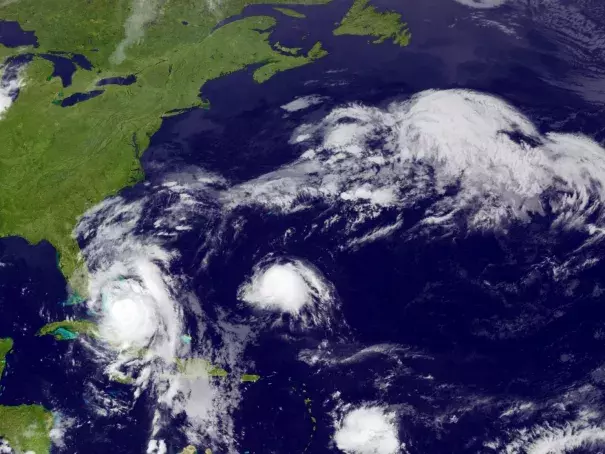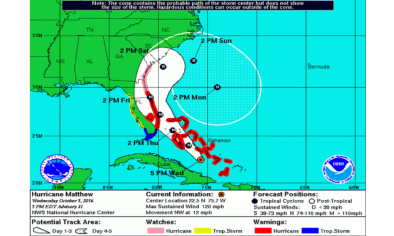Here’s what we can — and can’t — say about climate change and Hurricane Matthew

It is hard to dispute that, as sea level ticks steadily upward year after year, a place like Florida grows more imperiled by storms that can hurl large parts of the ocean inland.
In just the time between Hurricane Andrew, which hit South Florida as a Category 5 storm (but a small one) in 1992, and today, a “conservative” estimate would be that seas around Florida have probably risen about 2.5 inches, says Ben Strauss, a specialist on sea level rise at Climate Central. That may not sound like much, but even such a small sea level rise has a big effect.
“Every inch of sea level rise matters, much more than intuition would suggest,” Strauss said. “In Florida alone, more than 30,000 people live on land for each vertical inch above the high tide line, averaged across the first six feet. And if you’re a homeowner, there’s a huge financial difference between a flood which just reaches your lowest electrical outlet, and one which doesn’t; or which just floods your first floor, or doesn’t.”
And if you were to go back even earlier than 1992 — say, to 1940 or 1950 — the sea level rise between then and now would, naturally, be considerably larger. Sea level rise “makes a difference for the susceptibility of the coastline for surges,” said Emanuel, referring to the difference in sea level between the middle of the 20th century and today.
Related Content






